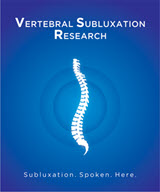$75 Million Dollar Stroke Case Verdict
An emergency department physician and a radiologist face a recent $75 million medical malpractice verdict linked to their care of a 32-year-old male patient who was sent to the emergency room by ambulance by his chiropractor after feeling dizzy and disoriented following an adjustment.
The patient went to the chiropractor complaining of neck pain and headaches of four days duration following a workout at a gym. The chiropractor also noted that the patient had reported blurred vision and ringing in the ears.
William Lauretti DC a New York Chiropractor signed an affidavit against the chiropractor alleging that the chiropractor:
". . . violated acceptable chiropractic practices by manipulating [patient's] neck when he had demonstrated focal neurological deficits in conjunction with new onset neck pain and headache."
- A member of the Speakers Bureau for the National Chiropractic Mutual Insurance Company (NCMIC)
- Professor in Chiropractic Clinical Sciences at New York Chiropractic College,
- Editorial Board Member of the Journal of the American Chiropractic Association,
- Member of the American Chiropractic Association,
- Member of the Board of Directors of the Association for the History of Chiropractic
According to the lawsuit, once he arrived at the hospital a series of miscommunications and negligence by multiple medical providers delayed the diagnosis and treatment of the stroke until the next day, which led to catastrophic brain damage for the patient, who developed locked-in syndrome. The rare neurologic syndrome causes complete paralysis except for the muscles that control eye movements.
According to court documents the patient ". . . has expended millions of dollars for medical expenses for his care and he will need 24 hour a day care for the rest of his life."
The jury attributed 60% fault to the emergency department physician and 40% to the radiologist.
The medical errors that ensued at the hospital included a failure by the ER physician to inform the consulting neurologist of the chiropractic neck adjustment which attorneys alleged is "a known stroke risk factor" and did not adequately communicate the results from CT angiography and lumbar puncture. The CT showed abnormalities consistent with a dissection.
Despite this he was discharged from the ER and sent to ICU with a diagnosis of encephalitis.
It wasn't until the next day that an MRI and MRA were ordered demonstrating a massive stroke and thrombosis of the basilar artery.
By then it was too late.
Further allegations were levied against several other members of the patient's care team, including the neurologist, a critical care physician, a physician assistant, and intensive care unit nurses, but they were not found liable by the jury.
The chiropractor was dismissed from the lawsuit, stating that he and the patient had reached an amicable resolution.
TAKE AWAY POINTS
- This case predates COVID and the additional burden of vascular incidents arising from infection and vaccination.
- It reinforces already existing case law and published research that "chiropractic is a known risk factor for stroke". This is despite any evidence of a causal relationship.
- The expert testifying against the chiropractor (William Lauretti) alleges that the existence of focal neurological deficits in conjunction with new onset neck pain and headache should have stopped the chiropractor from performing adjustments. This is despite the reality that these types of signs and symptoms are routinely seen in chiropractic offices and adjustments can alleviate those symptoms.
- The chiropractor acted quickly following ominous signs and symptoms that ocurred after the adjustment. He called 911 immediately. This action alone had the potential to mitigate the damage to the patient had the hospital not violated the standard of care.
- There was no evidence presented that the chiropractor contacted the ER or any of the physicians to check on the patient's status. While its conjecture - had he contacted the ER it may have expedited the ordering of the MRI and MRA and allowed heparin to be administered sooner.
CLICK BELOW for more information on handling potential stroke and dissection cases:
- ChiroFutures Responds to Chiropractors Being Blamed for COVID Related Risks
- URGENT: Increase in Vascular Related Incidents, Complaints & Lawsuits

Blogs
- The Chiropractic Cartel: A Look Back at Bias in Accreditation and its Imact on Today's Profession
- Inside Montana's Chiropractic Monopoly: ACA & MCA's Brazen Board Takeover
- Concerns Grow About Control of the NY State Chiropractic Board by the ACA - Use of X-ray in NY Under Threat
- Reproductive Health Information and Chiropractic Care: Navigating New Privacy Regulations
- Navigating Substance Use Disorder (SUD) Consent: What Chiropractors Need to Know













